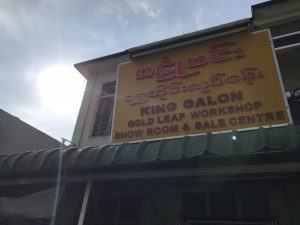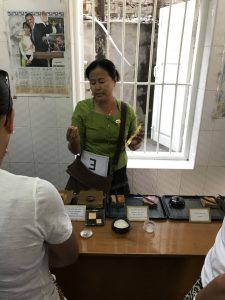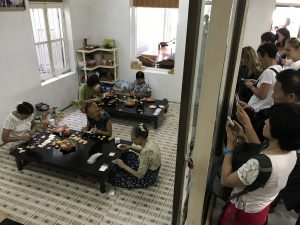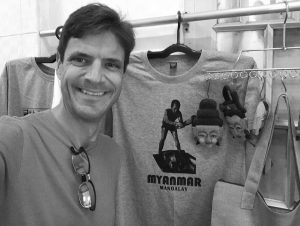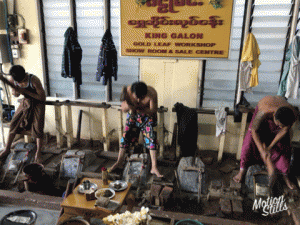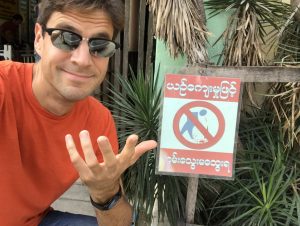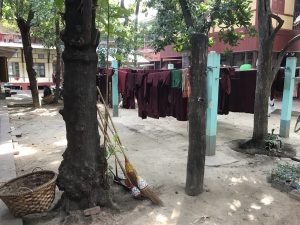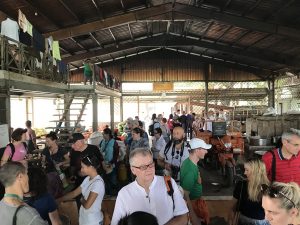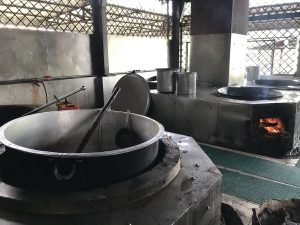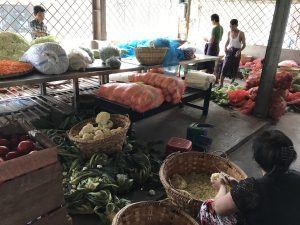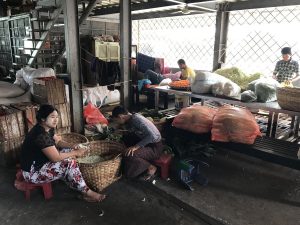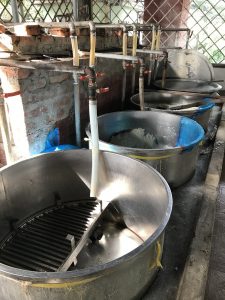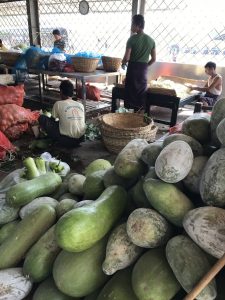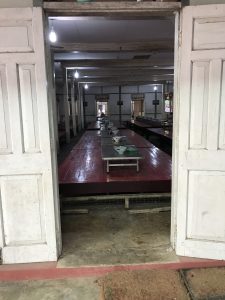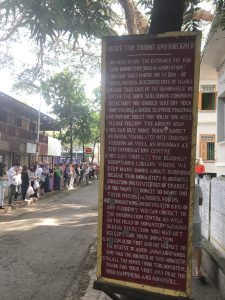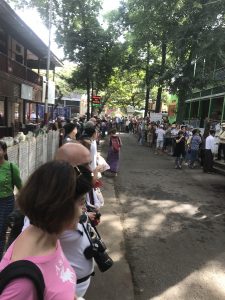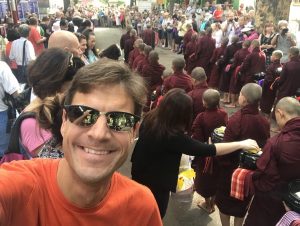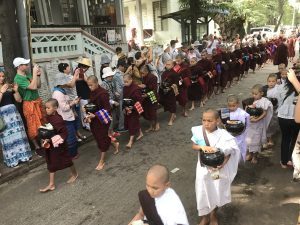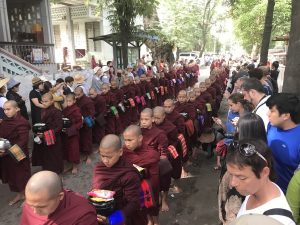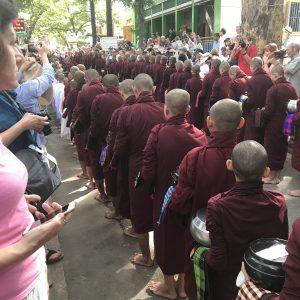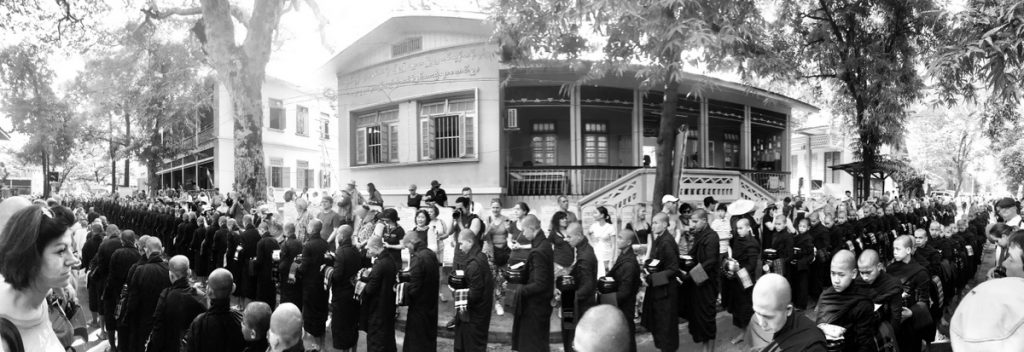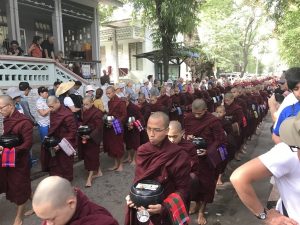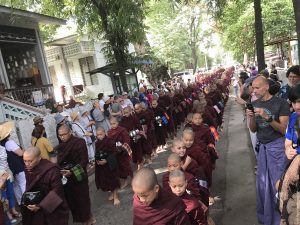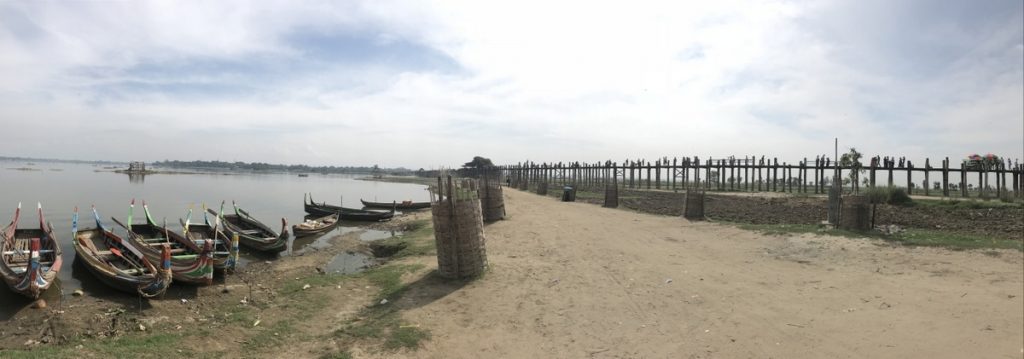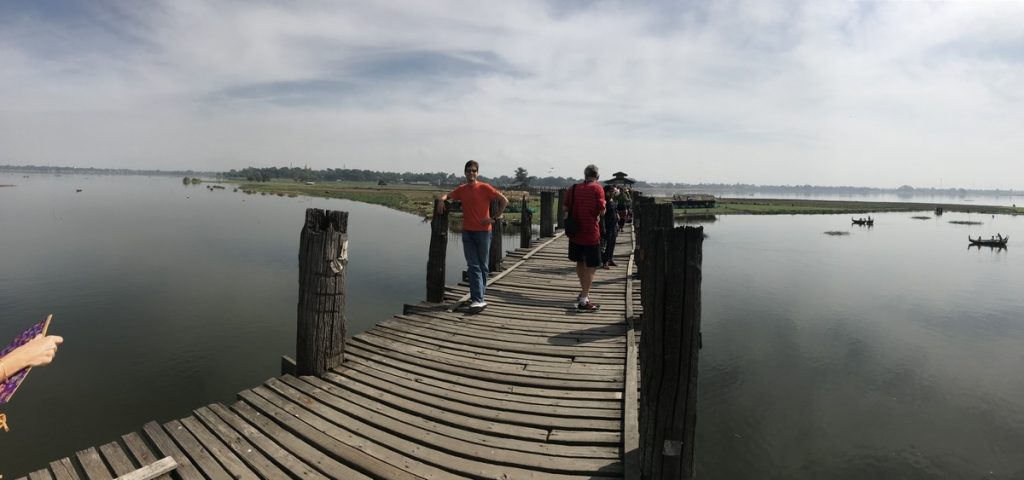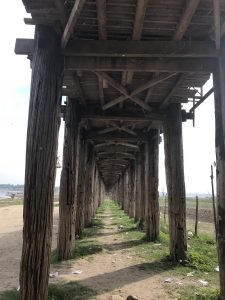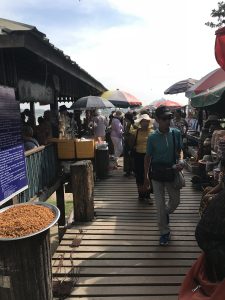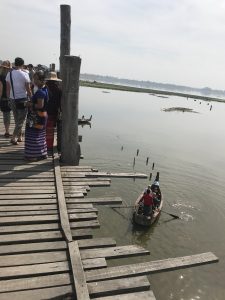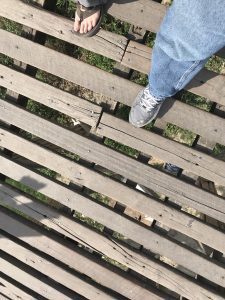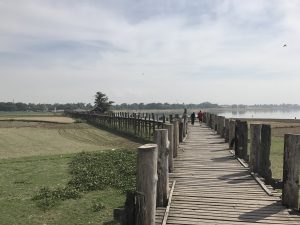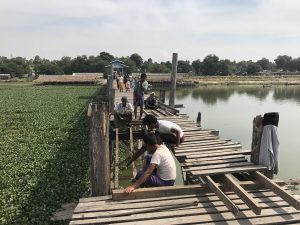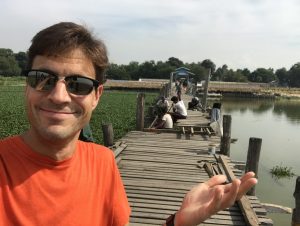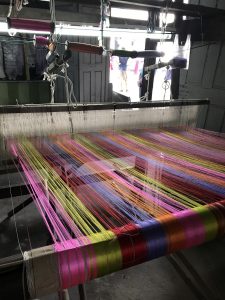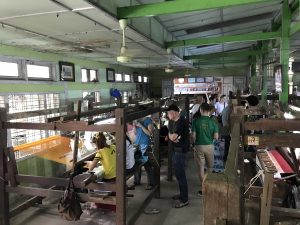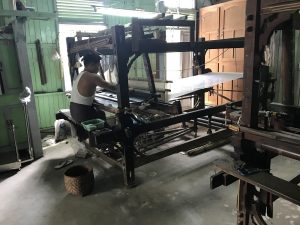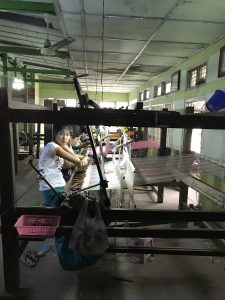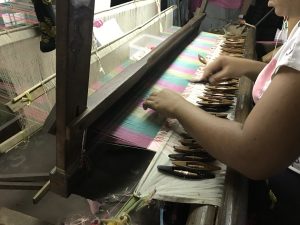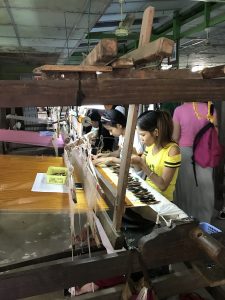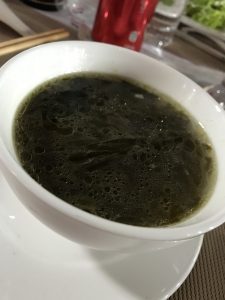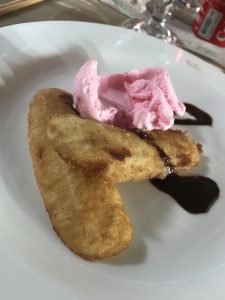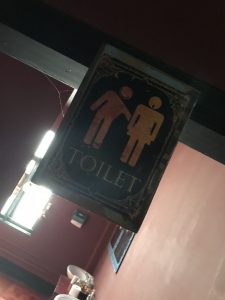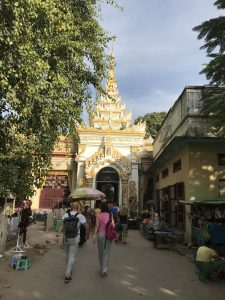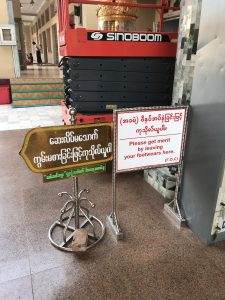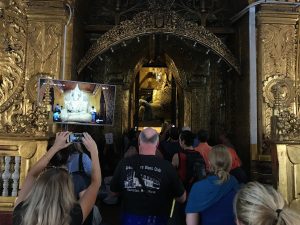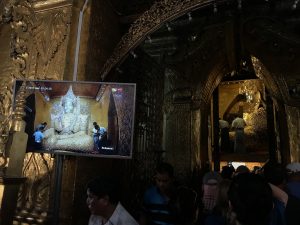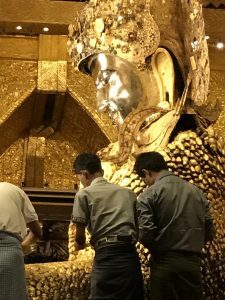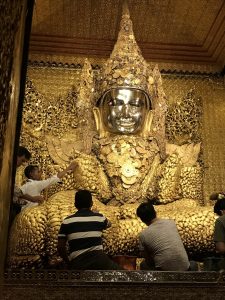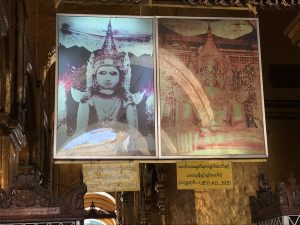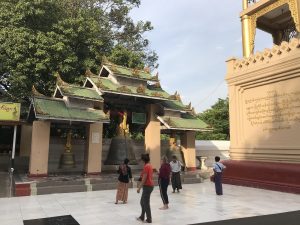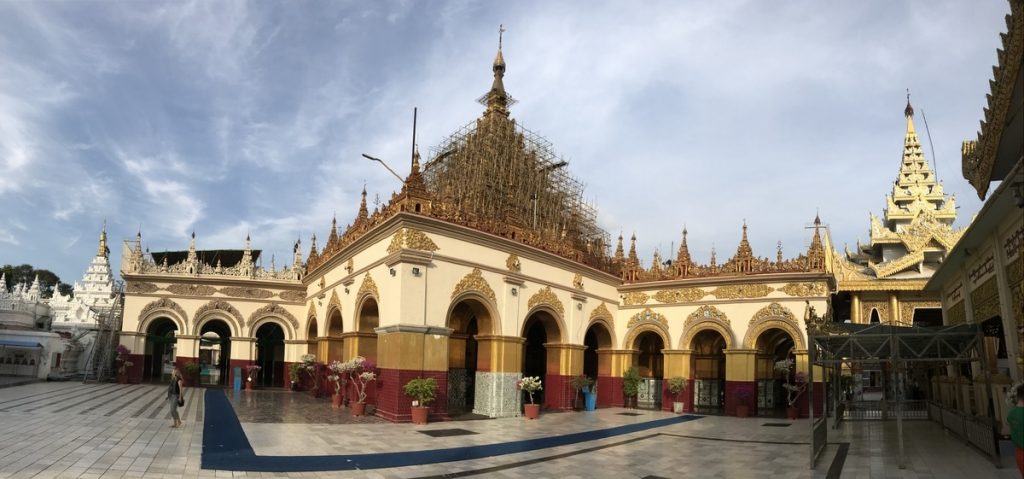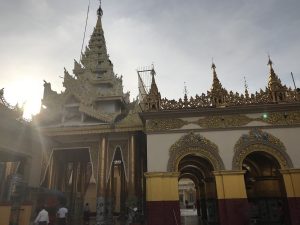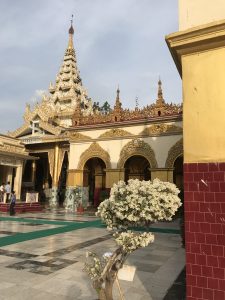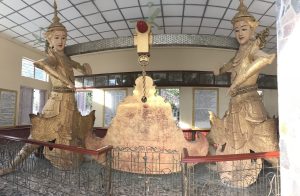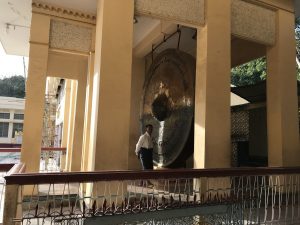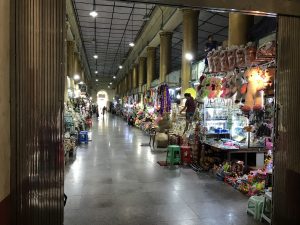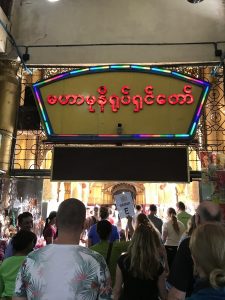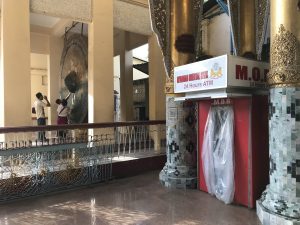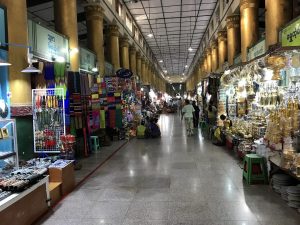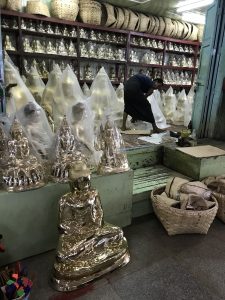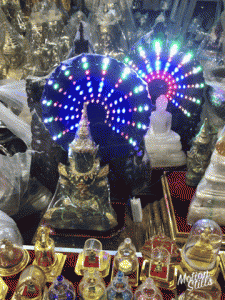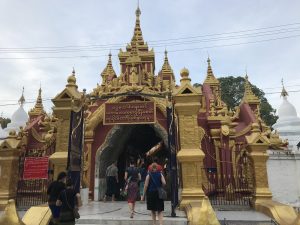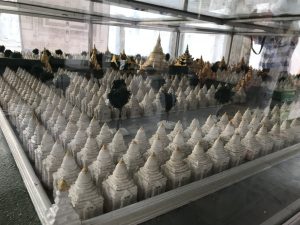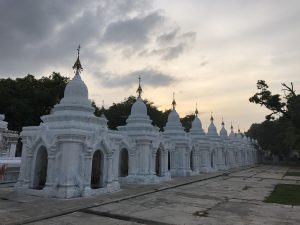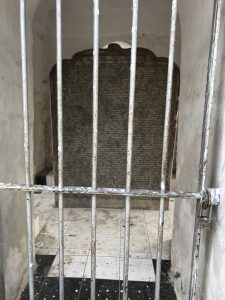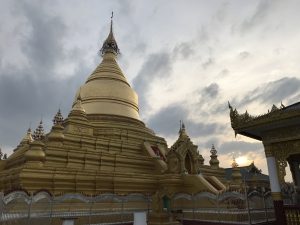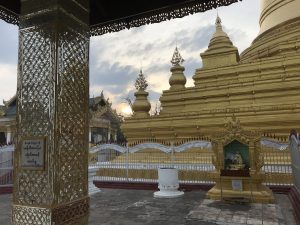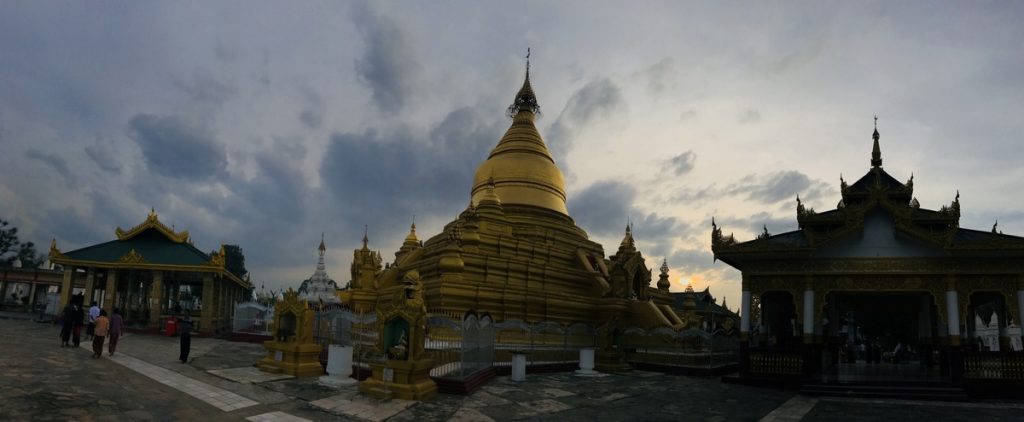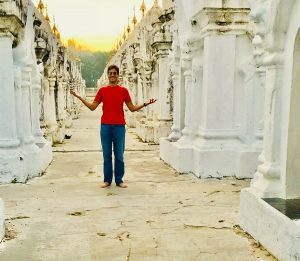Previously on runkevinrun.com:
Geographic background: MANDALAY is second largest city in Burma, known for its handicrafts and artisans. It’s the main trading center for the upper region of Myanmar and was the last capital of the Burmese kingdom from 1857-1885. The British finished their conquering “colonization” in that year with the capture of the last king and his exile to India. Today, the population is just over 1.2 million and as always the majority is Burmese, with various other minorities. Because of its proximity to the Chinese border, there’s also a large ex-pat Chinese population, making up almost 30% of the city. Mandalay is also home to various Buddhist monastery colleges and is a national religious center. Almost 70% of the Buddhist monks in the country call Mandalay home. There’s a lot of traffic in the area thanks to the confluence of cars, bicycles, rickshaws, horse and cart and of course the motorbikes. There are apparently over 900,000 motor bikes in the city alone with many more in the countryside.
***
As our long bus tour began, we passed the Royal Palace. Because I never seem to get photos taken from a bus window, I didn’t even try and snap a shot. I may endeavor to pull one illegally from google images but the deal is the walls and moat are all original but the interior buildings were all destroyed in World War II. In 1995, the military junta ordered a partial reconstruction, rebuilding 60 of the original 100 structures. During the colonial conquest, the British looted the palace and took valuable treasures and historical artifacts. When Burma gained its independence in 1948, *some* of the treasures were returned including the Royal Lion Throne which now resides in theYangon museum. But a great deal remains “lost” or “missing”… albeit rather typically much is displayed in the Royal Albert Museum in England.
Our first stop of the day was at a gold leaf factory. Still done in the traditional way, the process is incredibly labor intensive. Only 10-15 families continue this tradition and there’s not a lot of money in it (surprising given that it’s all based on gold, right?).
The Gold Leaf Process:
They take a 32g bar of gold bullion and stretch it out into a 20 foot long ribbon. Then they cut that into 4 pieces, and cut each 5 foot strand into 200 pieces. They place these 200 pieces onto special bamboo paper and pile them into a leather skin. Placing the pouch on the ground, a “burly muscle man” as Sheila described the worker, takes a large iron wood hammer and pounds the pouch for 30 minutes.
After that, they take each flattened flake and divide them into six pieces. Once again they’re placed in a pouch and bashed for another 30 minutes to flatten them further. The third stage has the 1200 super flattened gold flakes cut into another 5 pieces. They take 3 of the 5 and form a “leaf” and once again place them back into a pouch. Only this time, they pound the pouch for FIVE hours.
And because this is the traditional way, they use a water clock – a top with holes in it float’s in a gourd. As the pounding and time passes, the top fills and when it submerges, they empty the top. They do that 18 times and it’s an hour.
There were more than a few comments from us runners that we lose track of loops and couldn’t fathom counting “water resets.” “Was that 13 turns or 14?”
Seventy percent of the gold leaf is used for religious purposes – coating the Buddhas, the pagodas, etc. The remaining 30 percent is used for cosmetics, wall paper, and various other commercial interests.
I was exhausted just watching these guys work for a few moments.
I did however love this no vomiting sign just outside the factory. Someone else said he thought it meant “no spitting.” Either way, it’s a graphic sign worthy of a photo.
***
The Mahogandayon Monastery is effectively laid out like the college campus of Buddhism. Supported by donors who wait a year or more to contribute to the place, it’s also a tourist attraction for seeing the lunch time procession of monks. Like something out of a Disneyland Parade, this ritual entrance into the spacious dining halls was a surreal experience. I felt weird snapping photos of people lining up for chow and then sitting down to eat. But I’m glad I saw it… it just made me feel a little voyeuristically creepy. I felt the same way as I snapped this photo of the monk robes hung out to dry. As was often the case, people voiced some of the same thoughts, “How do they know which robe is theirs?”
The kitchen at this monastery has to cook for anywhere from 800-1300 monks who are residing there at any given time. That’s a lot of meals and requires a fair bit of groceries to make things go. It’s all done by donation though.
In the pre-darn morning, the monks all head out into the streets and makes an alms round. They circulate amongst the houses and businesses and eat at the houses, as well as collecting donations for their sect. They only stop for 2-3 minutes, but cannot make a noise to solicit donations. They stand with their eyes down and holding their alms bowl and the locals contribute food, supplies, treats, money, whatever they wish to aid the monastery.
By 9 or 9:30, the monks head back to the monastery and put all their donations together into a communal pile. First an offering is made to Buddha and then the rest gets divvied up and assigned for use, with food supplies and consumables distributed according to need.
By 10 or 10:30, the monks all head into lunch together and this last part is what we were there to witness.
***
The U Bein Bridge is the longest wooden bridge in the world.
Originally there were just over 900 posts but as the years have gone by and pieces have rotted away or been repaired, some posts were added to improve the structural integrity, including a few concrete ones. Still, the majority of the thing is original and repaired in the traditional way.
It was constructed by the Bagan King in the 19th Century from 1849-1851. It’s 1.2 kilometers in length and was designed as a means for people to get across without having to use a ferry. The slats are not uniform and even today there are no barriers or railings – it’s like a giant lakeside pier only stretching entirely across the river. We were advised to be careful and to be mindful that locals still use the thing are not interested in snapping photos or buying the souvenirs and thus may just want to move quickly across. It’s easy to get jostled and bumped… and it is therefore easy enough to fall off into the water.
When we were there the water level was pretty low but some days during the year the bridge is washed out because of the high tides. It’s an astonishing thing to think as we walked across this thing looking down.
I walked to a point where they were repairing a section of the bridge, only a tenth or so from the other side. I kinda wish I had walked on the to me precarious makeshift detour they had constructed but that guy’s saw cutting through the wood nearby gave me pause.
It was a fascinating thing to see and emblematic of the incongruity of traditional and modernity. As a farmer worked the land nearby with an oxen and cart, he took a call on his cell phone. Amongst the various vendors on the bridge there was an battery powered laser printer churning out digitally drawn cariactures of tourists. A cell phone vendor was handing out flyers to locals and tourists touting improved service. And the bridge itself wobbled and creaked. It was in far better repair and state than the Yangon boardwalk and I never felt like the thing would collapse. But I did know I was walking in the footsteps of the 19th century and beyond.
***
The third big highlight of Amarapura is the weaving industry. Amongst the textiles produced it used to be that cotton was for the commoners and the even the rich; silk clothing was reserved exclusively for the royal family. That changed with the arrival of the 1885 colonial period although silk remains reserved for special occasions.
The weaving factory we visited was populated with young girls, from age 14-25, putting together intricate silk fabric. They’re paid roughly USD$5 albeit get free meals. It’s a labor intensive process, with a longyi skirt taking approximately 1 month to produce. The cheapest silk longyi costs USD250 and can run into the thousands for the more intricate designs.
Again, I was a little weirded out coming into these people’s place of business and snapping photos and talking about them as if they were exhibits and not people. I was glad to see several of the pairs of young women weaving sharing their iphone’s earbuds and listening to music. Sheila tells us these girls are happy to be employed and close to home as family is important and by staying local even at a less than stellar wage, the family stays together. Yet I couldn’t help but feel like a privileged jerk for gawking.
***
The real hiccup of the day was a snafu filled lunch. Something went wrong clearly as it took us over 2 hours to dine… and the food was mediocre at best. This sour soup reeked of, well, sourness, and became a potent topic of conversation amongst all the tourists. It tasted better than it looked and smelled but that smell was hard to overcome.
I had trouble with lunch as well as the room was cacophonous and rowdy. And the natives got ever more restless as the minute hand swept the clock face a second time. This is the danger of large group tours – you can find yourself spending too much time somewhere you don’t love and rushing through places you’d like to wander around a bit more. I also am such an old man these days that I can no longer localize sound so a loud room becomes a mentally draining challenge of trying to concentrate and pick out word cues to stay with a conversation even with someone seated next to me. It’s an exhausting, headache inducing thing… and because it took 2+ hours, it was a bit rough.
But the ice cream and banana fritters dessert helped.
But seriously, what the sexual harrassment dealio is THIS sign about?
***
Because of delays and issues, we had to kind of rush the final two sightseeing visits of the day. Which is a shame, as they both were highlights of the tour.
Mahamuni Pagoda is actually a huge temple with a central pagoda and a large temple inside with a mixed metal faced Buddha. He’s almost 12 feet tall and has four or five inches of gold leaf on his body at present, with extra layers from donors wealthy and poor being added constantly. Literally constantly. As in there were guys applying the gold leaf the entire time we were there and presumably the entire time we were not. The gold leaf as discussed above is manufactured in such a way that even the poorest Burmese can buy a flake and make a donation to give everyone an opportunity to be a donor.
This particular Budda was built 2600 years ago and blessed by the Buddha himself. In 1784, the Buddha was moved to its present place in Mandalay. In 1884 the original temple was burned down by a fire but miraculously the Buddha itself escaped from the fire itself.
I had trouble with the lexicon so here’s a quick primer on the differences between a pagoda and a temple. A pagoda is a solid structure no interior space and can walk around while a temple has interior spaces with at least one Buddha inside and places for worship. So this Mahamuni Pagoda is a pagoda AT a temple… I didn’t see it called Mahamuni Temple anywhere but my Burma reading comprehension is, um, non-existent.
As a place of worship I was struck by the marketplace hallways we walked through (barefoot as it IS a temple) and vaguely recalled from my abandoned Catholic days something about “thieves in the temple” and Christ freaking out about such things. This shows my ignorance and arrogance but given the weird preponderance of gold leaf, neon lights, technicolor LEDs and ATMs available on site, the Buddhist temples take on a Trumpian Vegas vibe, a religious place informed by casino “glitz and glamor.” That’s unfair obviously and untrue but it was my impression of such places.
***
While some of that glitz carried over into the final stop of the day, there was also for me a deeper connection. The Kuthodaw Pagoda is famously billed as “the world’s largest book.” That’s because around the main pagoda spire are arranged 729 marble tablets with Buddhist proverbs and teachings. Each slab is 3.5 feet by 5 feet and contains the equivalent of 16,000 pages of a 38 volume book. UNESCO has placed it on the World Registry and it’s a site to behold.
I don’t know if it was because we were there later in the day, a mere 15 minutes before closing, but it felt less crowded and more conducive to contemplation. You could frame a shot very easily of the stone slab walkways with nary a person in sight. You could move without being jostled. A misty fog rolled through giving the place an ethereal quality. I really loved this place but we only had 15 minutes or so to take it in.
That again was the chief problem of the day – a lot of traveling and waiting for quick snatches of culture and meaning. Not that I’m a great one for insights and reflection but I did feel a bit rushed and like I was living the experience through my camera’s lens in an attempt to document the moment rather than experiencing the moment properly. That’s on me as much as on the clock but it has me worried I’m not doing this trip right.
***
Embracing my own take on Buddhism, I’ll endeavor to strike a middle way in the coming days and do my best to savor the experience. As tomorrow is Thanksgiving, I’m ever more mindful of just how fortunate and lucky I am. I just hope I’m worthy of such things and appreciative of the opportunities, that I make the most of the time I have.

